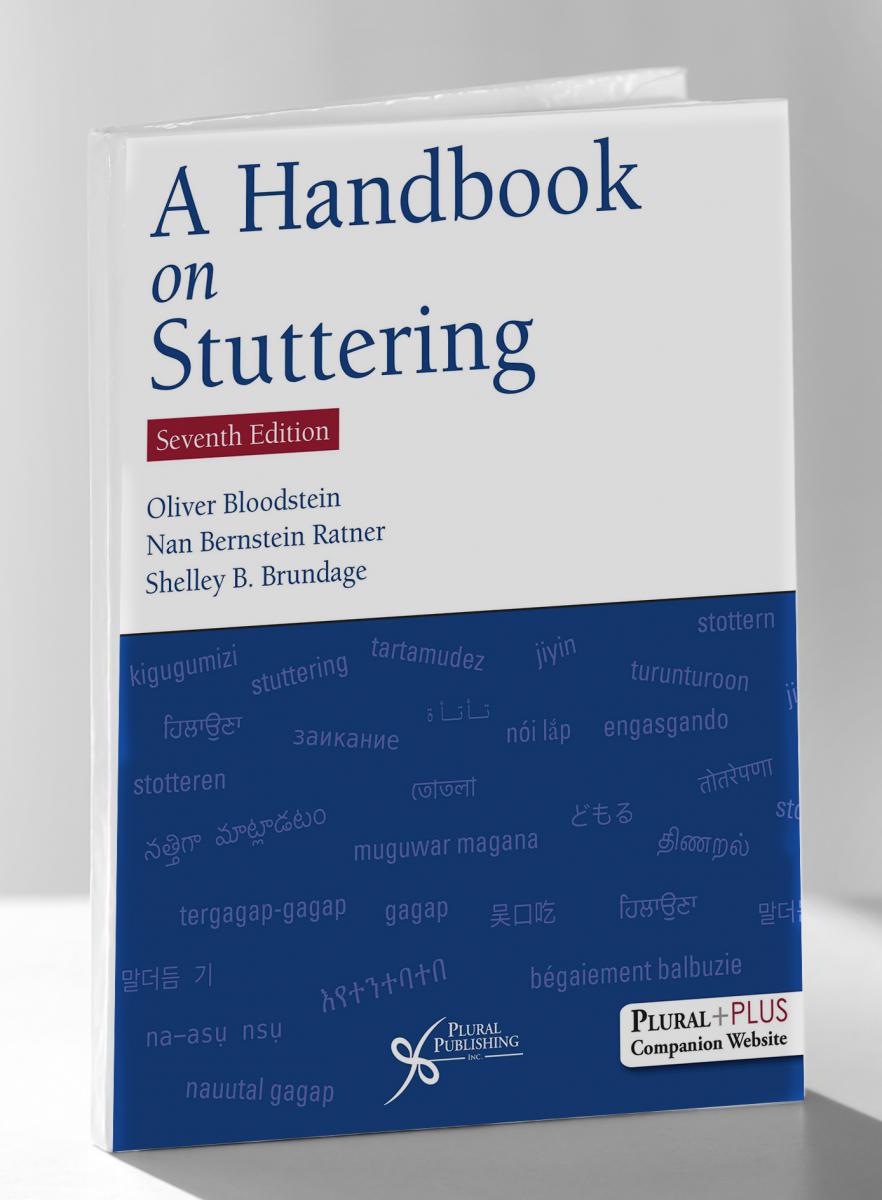Review by Edward Shvets
 With the recently minted seventh edition of A Handbook on Stuttering, Nan Bernstein Ratner and Shelley B. Brundage revive Oliver Bloodstein’s seminal work with an innovative format and the latest research to guide the reader to the new “edge of our knowledge of stuttering.” This book shows that stuttering is not some indomitable, mythical beast but a penetrable disorder, albeit “multi-factorial,” that has been scrupulously studied for decades.
With the recently minted seventh edition of A Handbook on Stuttering, Nan Bernstein Ratner and Shelley B. Brundage revive Oliver Bloodstein’s seminal work with an innovative format and the latest research to guide the reader to the new “edge of our knowledge of stuttering.” This book shows that stuttering is not some indomitable, mythical beast but a penetrable disorder, albeit “multi-factorial,” that has been scrupulously studied for decades.
Through not only presenting the most up-to-date and accurate research on stuttering but also synthesizing it in a cohesive and thought provoking manner, the authors arm the reader with a unique and accessible guide. Contrary to previous editions, which were limited by publishing, Ratner and Brundage go beyond strict chronology and reorder chapters to answer the questions “people tend to want answered before others.” They also add two chapters—one addressing pressing facts about stuttering (Chapter 12) and one on assessment (Chapter 13)—unprecedented in the history of the Handbook. The effect is that clinicians along with those who stutter have direct, easy access to succinct information about the speech disorder.
This edition preserves Oliver Bloodstein’s characteristic ability to convey a working knowledge of stuttering and bequeaths his resolve in the field to the next generation. By guiding the reader through research on stuttering, from old to the new, the Handbook shows how we came to know what we know and imparts a nuanced and motivating understanding of stuttering. In other words, we are dealing with an expansive yet reliable and steady fountain of knowledge rather than a fire hose that people can effectively learn from and in turn practically use to further advance knowledge about stuttering. A book is special when it’s likely to help inspire the very articles that will feature in its next edition.
This book is available from Plural Publishing.
From the Spring 2022 Magazine






 Podcast
Podcast Sign Up
Sign Up Virtual Learning
Virtual Learning Online CEUs
Online CEUs Streaming Video Library
Streaming Video Library